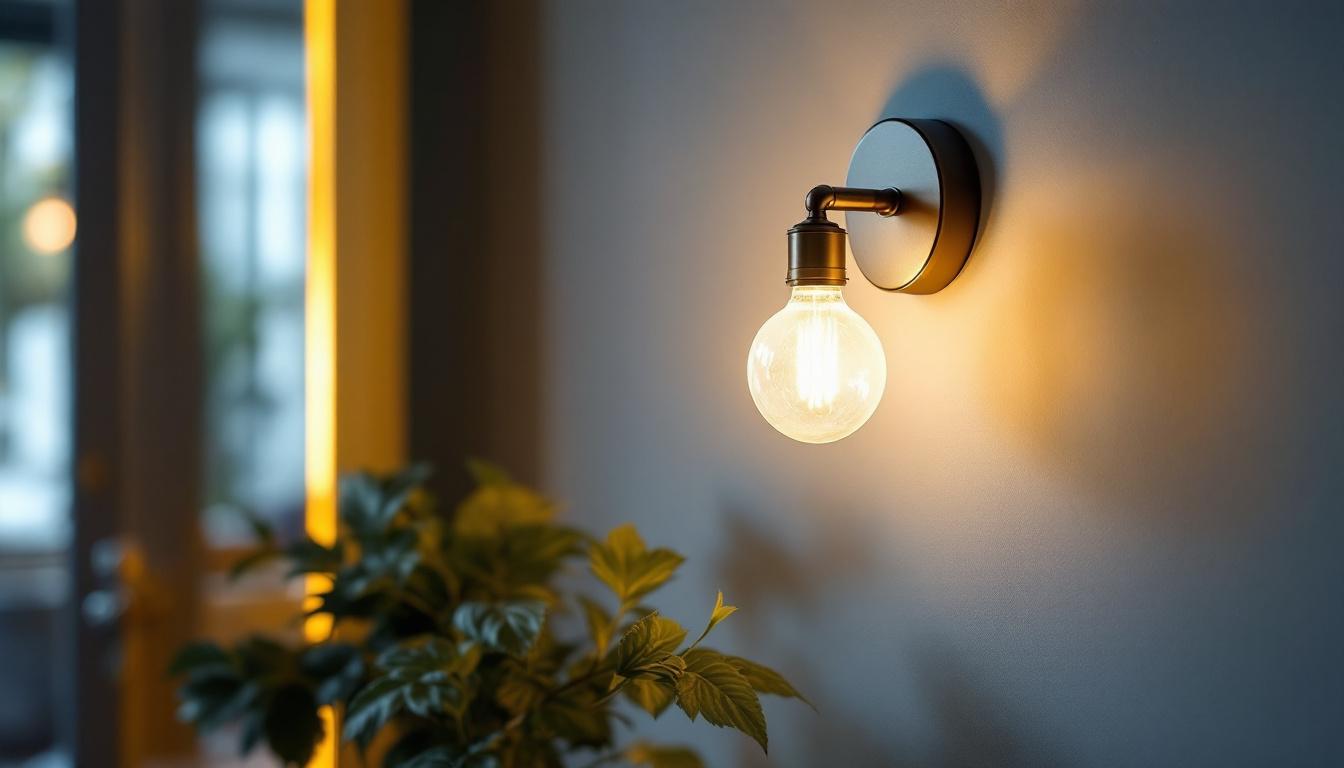
The transition from fluorescent lights to LED technology has become a significant trend in the lighting industry. For lighting contractors, understanding the nuances of LED replacements is crucial for meeting client demands and enhancing energy efficiency. This article delves into practical hacks and insights that can empower lighting contractors to navigate the LED landscape effectively.
LED lights have gained popularity for several compelling reasons. They offer superior energy efficiency, longer lifespans, and reduced environmental impact compared to traditional fluorescent lights. For contractors, these advantages translate into cost savings for clients and enhanced project outcomes. As the lighting industry evolves, the shift towards LED technology is not just a trend but a fundamental change in how we illuminate our spaces, reflecting a broader commitment to sustainability and innovation.
One of the most significant benefits of LED lighting is its energy efficiency. LEDs consume up to 75% less energy than fluorescent bulbs, which can lead to substantial savings on electricity bills. This efficiency not only appeals to environmentally conscious clients but also aligns with the growing demand for sustainable solutions in commercial and residential spaces. Moreover, the reduced energy consumption means that buildings can operate more efficiently, contributing to lower overall carbon footprints. As energy costs continue to rise, the financial incentive to switch to LED becomes even more pronounced, making it an attractive option for both new constructions and retrofitting existing buildings.
LEDs typically have a lifespan of 25,000 to 50,000 hours, far outlasting fluorescent bulbs, which usually last around 7,000 to 15,000 hours. This longevity means fewer replacements and lower maintenance costs for clients. Contractors can leverage this aspect to emphasize the long-term value of LED installations, making a compelling case for clients to make the switch. Additionally, the durability of LEDs means they are less susceptible to breakage and damage, which is particularly beneficial in high-traffic areas or environments where lighting fixtures are exposed to harsh conditions. This resilience not only enhances safety but also reduces the frequency of maintenance visits, allowing contractors to focus on other critical aspects of their projects.
Fluorescent lights contain hazardous materials like mercury, which can pose environmental risks if not disposed of properly. In contrast, LEDs are free from toxic substances, making them a safer choice for both users and the environment. This eco-friendliness is an essential selling point for contractors looking to appeal to clients who prioritize sustainability. Furthermore, the production and disposal of fluorescent bulbs contribute to landfill waste and environmental contamination, whereas LEDs can be recycled, further minimizing their ecological footprint. As more clients become aware of the importance of responsible lighting choices, contractors can position themselves as leaders in promoting environmentally friendly practices, thereby enhancing their reputation and attracting a more conscientious clientele.
When replacing fluorescent lights with LEDs, selecting the appropriate replacement is crucial. Not all LED products are created equal, and understanding the various options available can help contractors make informed decisions.
LEDs come in various color temperatures, measured in Kelvin (K). It’s essential to match the color temperature of the new LEDs with the existing lighting scheme to ensure consistency. Additionally, the Color Rendering Index (CRI) measures how accurately a light source displays colors. A higher CRI (above 80) is preferable for environments where color accuracy is crucial, such as retail or art galleries. For instance, a warm white light (around 2700K) creates a cozy atmosphere, ideal for residential settings, while a cooler daylight white (5000K) is often favored in commercial spaces for its invigorating effect, promoting alertness and productivity.
When replacing fluorescent lights, it’s vital to consider wattage and lumens. While wattage indicates energy consumption, lumens measure brightness. Contractors should guide clients to choose LED replacements that provide equivalent lumens to the fluorescent bulbs being replaced while consuming less wattage. This approach ensures optimal lighting without unnecessary energy expenditure. For example, a traditional 32-watt fluorescent tube typically emits around 2,800 lumens, so a contractor might recommend a 15-watt LED tube that delivers similar brightness, thereby significantly reducing energy costs and extending the lifespan of the lighting system.
Another critical factor is the compatibility of LED bulbs with existing fixtures. Some fluorescent fixtures may require retrofitting or modification to accommodate LED technology. Contractors should assess the current setup and advise clients on the best course of action, whether it involves direct replacements, retrofits, or complete fixture replacements. It’s also important to consider the dimming capabilities of the new LEDs. Not all LED products are compatible with existing dimmer switches, so ensuring that the chosen LEDs can function properly with dimming systems is vital for maintaining the desired ambiance in a space.
Furthermore, the installation process can vary significantly depending on the type of fixture and the LED technology selected. For instance, some LED tubes are designed for direct wiring, while others can be used as plug-and-play replacements. Understanding these differences can save time and reduce installation costs. Contractors should also inform clients about the potential for rebates or incentives from local utilities for upgrading to energy-efficient lighting solutions, which can further offset the initial investment and promote sustainability in their projects.
Proper installation is key to maximizing the benefits of LED replacements. Here are some practical tips for lighting contractors to ensure a smooth installation process.
Before beginning any installation, it’s essential to assess the existing lighting setup thoroughly. This evaluation should include checking the condition of fixtures, wiring, and any potential issues that may affect the performance of the new LED lights. A comprehensive assessment helps contractors identify any necessary repairs or upgrades, ensuring a seamless transition.
Incorporating smart lighting controls can enhance the functionality of LED installations. Smart controls allow users to adjust brightness, color temperature, and even schedule lighting based on their needs. Contractors should consider recommending smart lighting solutions to clients, as these features can significantly improve energy efficiency and user experience.
Safety is paramount during any lighting installation. Contractors should adhere to all safety protocols, including turning off power before starting work and using appropriate personal protective equipment. Additionally, educating clients about the importance of safety during the installation process can foster trust and professionalism.
While the initial investment in LED technology may be higher than fluorescent options, the long-term savings can be substantial. Contractors should communicate these cost considerations effectively to clients.
Clients may be hesitant to invest in LED replacements due to higher upfront costs. However, contractors can illustrate the long-term savings achieved through reduced energy bills and lower maintenance costs. Providing a detailed cost analysis can help clients understand the financial benefits of making the switch.
Many utility companies offer incentives and rebates for upgrading to energy-efficient lighting solutions. Contractors should stay informed about available programs in their area and guide clients through the application process. This assistance can further reduce the financial burden of switching to LED technology.
Despite the numerous advantages of LED replacements, contractors may encounter challenges during the transition. Understanding these challenges and having solutions at hand can streamline the process.
One common issue with LED replacements is flickering, especially when used with older dimmer switches. Contractors should recommend compatible dimmers designed for LED technology to avoid such problems. Additionally, educating clients about the importance of using the right equipment can prevent future headaches.
Another challenge is maintaining color consistency across different LED products. Variations in manufacturing can lead to noticeable differences in color temperature and brightness. Contractors should source LEDs from reputable manufacturers and, when possible, use products from the same batch to ensure uniformity.
LEDs produce less heat than fluorescent lights, but proper heat management remains essential for optimal performance. Contractors should ensure that fixtures have adequate ventilation and that LEDs are not installed in enclosed spaces without proper cooling. This attention to detail can extend the lifespan of the LEDs and enhance their efficiency.
The lighting industry is continually evolving, and staying abreast of future trends can give contractors a competitive edge. Here are some emerging trends to watch.
Human-centric lighting focuses on creating environments that enhance well-being and productivity. This trend emphasizes the importance of color temperature and intensity in relation to natural daylight. Contractors can explore options for tunable white LEDs that allow clients to adjust lighting based on time of day, fostering a more comfortable and productive atmosphere.
As smart home technology becomes increasingly prevalent, integrating LED lighting with smart home systems is a growing trend. Contractors should familiarize themselves with popular smart home platforms and consider offering solutions that seamlessly connect LED lighting with other smart devices, enhancing convenience and user experience.
Continuous advancements in LED technology are leading to improved efficiency, brightness, and color rendering. Contractors should stay informed about new developments and innovations, as these can provide opportunities to offer clients the latest and most effective lighting solutions.
Transitioning from fluorescent lights to LED technology presents a wealth of opportunities for lighting contractors. By understanding the benefits of LEDs, choosing the right replacements, and following best installation practices, contractors can deliver exceptional value to their clients. Embracing smart lighting solutions and staying informed about industry trends will further enhance their ability to meet client needs and drive successful projects. The future of lighting is bright, and contractors who adapt to these changes will undoubtedly thrive in the evolving landscape.
Ready to elevate your lighting projects and offer your clients the best in LED technology? Look no further than LumenWholesale for all your lighting needs. Our commitment to quality and affordability ensures that you can provide your clients with top-notch, spec-grade lighting products without breaking the bank. Say goodbye to local distributor markups and hello to our unbeatable wholesale prices, complete with the convenience of free shipping on bulk orders. Don’t compromise on quality or value; choose LumenWholesale for a seamless purchasing experience. Start transforming your lighting projects today by visiting Wholesale Lighting at the Best Value.

Discover the transformative power of sconce wall lights in enhancing lighting installation projects.

Explore the transformative role of heavy-duty outdoor lamp posts in modern lighting solutions.

Discover the key challenges lighting contractors face with emergency lights batteries, from maintenance hurdles to technological advancements, and learn strategies to overcome these obstacles for optimal performance and safety..

Discover how ceiling kitchen lights are revolutionizing the lighting industry, offering contractors innovative solutions for modern home designs.